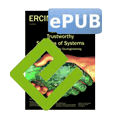by Andreas Wild
Less than one year since its inception, the ECSEL (Electronic Components and Systems for European Leadership) Joint Undertaking (JU) is launching six research and innovation actions and six innovation actions arising from its 2014 calls, investing €708 million in electronic components and systems. The ECSEL JU is established by the European Council with the aim to keep “Europe at the forefront of technology development, bridging the gap between research and exploitation, strengthening innovation capabilities and creating economic and employment growth in the Union”.
Over the last five years, two organizations preceding ECSEL JU under FP7 (ENIAC and ARTEMIS JUs) pioneered a new type of project: “pilot line” or “innovation pilot” projects, positioned at higher technology readiness levels in order to bridge the “valley of death” separating the scientific discovery from its economic valorisation. Using open and competitive calls for proposals and a transparent evaluation and selection process, the JUs succeeded in concentrating investments on high priority, strategic topics. In fact, leading European companies engaged their ecosystems, assigned sizable research and innovation budgets, and used their best specialists in preparing convincing proposals that succeeded exclusively based on their merits. The JUs run a transparent evaluation and selection process performed by independent experts and public authorities.
The following examples illustrate two important areas (among others) in which a sequence of projects attracted significant private and public funding, commensurate with the global investments in the field, to advance the state of the art and generate industrial impact.
Power electronics
In power electronics, a sequence of proposals selected for funding address the critical societal challenge of energy efficiency:
EPT300: Enabling Power Technologies on 300mm Wafers (April 2012- March 2015) introduced unique 300mm diameter substrates thinner than paper, processing equipment, handling and automation concepts creating world’s most efficient and most affordable devices.
EPPL: Enhanced Power Pilot Line (April 2013- March 2016) is setting up a pilot line for high reliability devices of the next generations, and chip-to-package 3D integration to optimally serve industrial, medical and mobility applications.
eRAMP: Excellence in Speed and Reliability for More than Moore Technologies (April 2014- March 2017) accelerates yield learning and uses cloud based design technology and heterogeneous integration to demonstrate highest energy efficiency in motor drives, healthcare equipment and LED lighting applications.
ECSEL JU launches now a new Innovation Action taking these concepts to the next level:
- PowerBase: Enhanced Substrates and GaN Pilot Lines Enabling Compact Power Applications (May 2015 – April 2018) using innovative silicon and gallium nitride substrates combined with embedded chip assembly technologies to achieve unparalleled efficiency in compact power applications.
The 130 participations from 12 countries engaged €270 million, and have been awarded €76 million national and €48 million EU grants to position
Europe as the leader in power electronics.
Electric mobility
European companies are world leaders in automotive innovation and sales. Together with their suppliers of electronic components and systems, they have proposed ambitious actions to establish leadership in electric mobility.
- E3Car: Nanoelectronics for an Energy Efficient Electrical Car (Jan 2009 – Jan 2012) achieved a breakthrough in nanoelectronic technologies, devices and miniaturised subsystems achiev-ing 35% energy savings for the same performance.
- Pollux: Process Oriented Electrical Control Units for Electrical Vehicles Developed on a Multi-system Real-time Embedded Platform (Mar 2010 - Feb 2013) generated the first platform concept for electric vehicles architecture, electronics, communication and embedded systems.
- IoE: Internet of Energy for Electric Mobility (May 2011 - Apr 2014) enabled seamless connectivity and created middleware to achieve interoperability of the Internet applications addressing the electric mobility infrastructure.
- Motorbrain: Nanoelectronics for Electric Vehicle Intelligent Failsafe Powertrain (Apr 2011 – Mar 2014) introduced radical innovation in component and subsystems resulting in unparalleled energy efficiency of the drive-train and safe exit from traffic even in case of failure.
ECSEL JU is now launching a new research and innovation action, taking these concepts to the next level: 3CCAR: Integrated Components for Complexity Control in Affordable Electrified Cars (Apr 2015 – Apr 2018) shall introduce innovative approaches at all levels (vehicle architecture, sub-systems, components) to increase the affordability of the electric vehicles and accelerate their market penetration.

Figure 1: Convergence of European Electric Vehicle projects.
One hundred and fifty one participations from 16 countries engaged €175 million , and were awarded €49 million national and €37 million EU grants to defend Europe’s leading position in the global competition.
Conclusion
The ECSEL JU three-way funding model (private sector, Member States and EU) is proven as compelling. It succeeds in leveraging significant private and public investments and concentrating them on strategic priorities. The ECSEL JU offers a fertile collaborative environment for large and small companies, academic and institutional researchers from all around Europe, together developing and implementing high impact industrial strategies, which are beneficial for Europe in general.
Link:
http://www.ecsel-ju.eu/
Please contact:
Andreas Wild
Executive Director of the ECSEL Joint Undertaking
E-mail:











